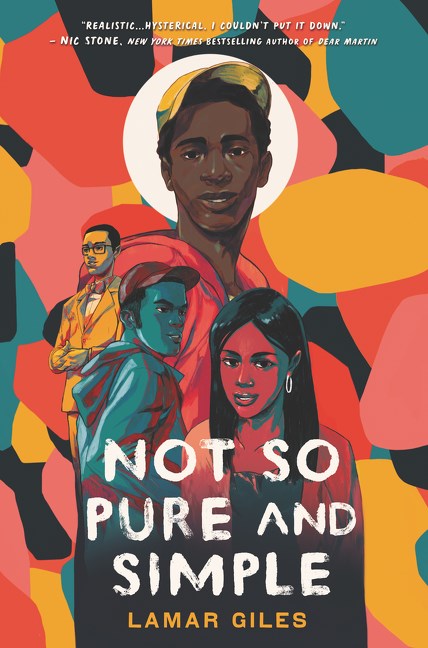

Now that she’s finally single, Del’s ready to swoop in and make his move, but he never expected to follow her into his church’s program for pledging purity. By whatever means I discovered this book, I’m glad I did this is some fabulous YA.ĭel’s been in love with Kiera since their kindergarten production of The Wizard of Oz, but she’s always been attached to someone else. In fact, Lamar Giles is a founding member of We Need Diverse Books and serves on the Honorary Advisory Board! How cool is that?!?!? (Thank you to the founders and members for this group, for the work you do to keep our shelves stocked with books that represent everyone! It never ceases to amaze me how much better YA now is than when I was young.). *characters grappling with religious and social issues Toxic masculinity is not talked about enough, and Lamar Giles shines in speaking to this and other issues in this book.I don’t quite remember how Not So Pure and Simple by Lamar Giles (Quill Tree Books, 2020) came to be on my reading list (or at least where I found it), but I know WHY, because it ticks so many of my boxes: He’s a nice guy who is complicated and flawed, and I loved every minute of his story. And though Del is all about Kiera, his actions never once consider her feelings, or what she might want.ĭel’s not all troublemaker, nor all squeaky clean. Del might be acting with the best intentions, but his friends are giving him the side eye, and even his dad is worried about what this pledge means for his manhood. Like the tv show Sex Education, this book is an excellent portrayal of a male protagonist dealing with the complications of sex. Even if that means taking a Purity Pledge.

Which means he’s ready to do anything (however unconventional) to get the girl he wants. But he’s never had a shot until now-it’s their junior year and she just broke up with her boyfriend. The novel follows Del, who has had a childhood crush on Kiera Westing since literally forever.

But in Not So Pure and Simple we see just that: a complex portrait of a lovably imperfect boy struggling with his identity in many forms. There can never be a Black teenage boy that falls somewhere in the middle. So much of what is fed to the masses is that Black boys are troublemakers, or that there are only two types of kids: one that is a problem child and another that is squeaky clean. One of the things I’m loving about YA right now is that we’re seeing more and more stories being told by Black male writers about Black boys.


 0 kommentar(er)
0 kommentar(er)
